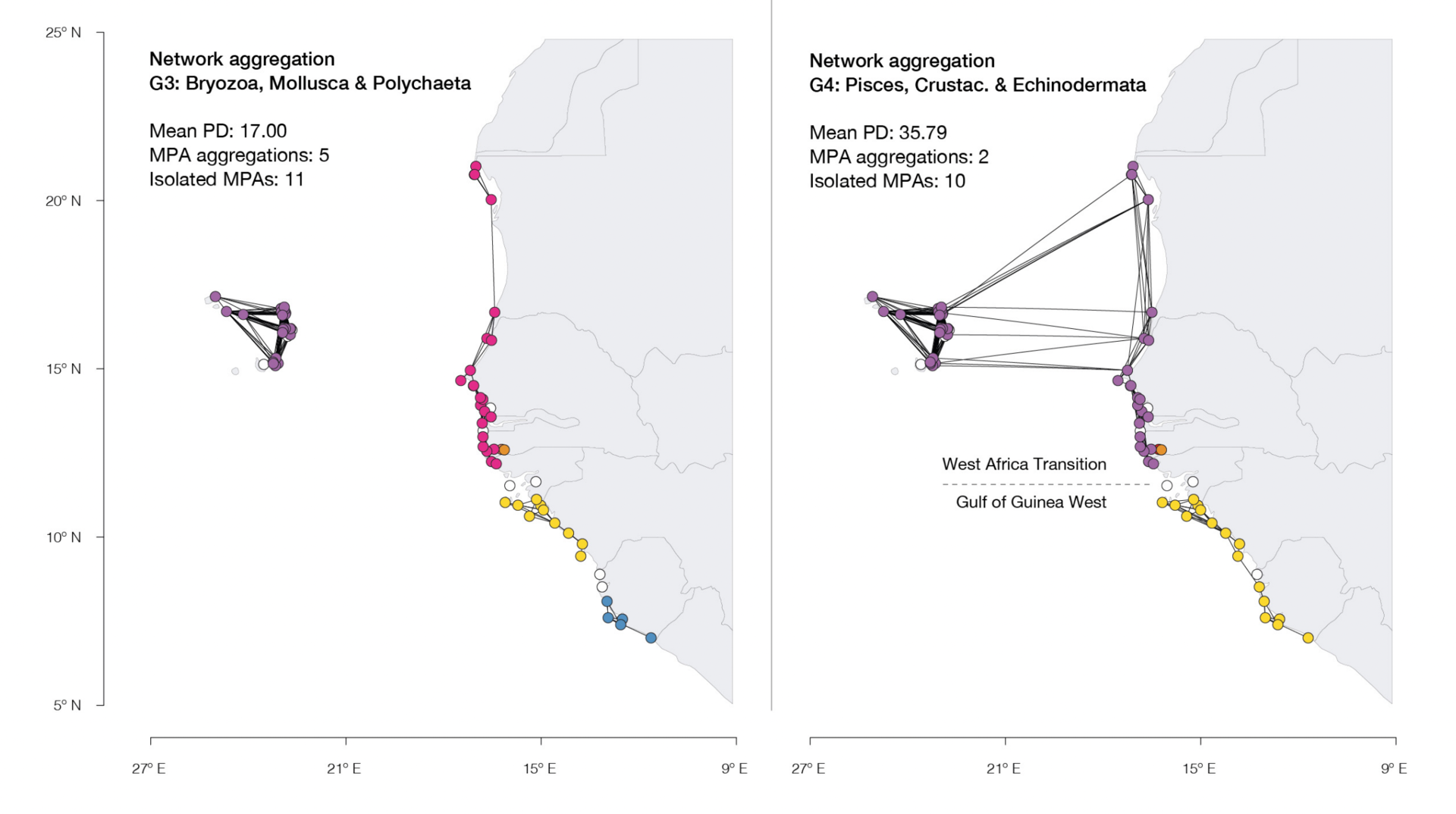Scientific publication
Biodiversity connectivity in Western Africa MPAs
Biophysical modelling revealed that connectivity differs sharply among ecological groups, from highly connected (e.g., fish) to isolated ecosystem structuring species (e.g., corals) that might undermine conservation efforts, as they are the feeding or nursery habitats of many other species.
Credits: Pedro Colon on unsplash
Marine Protected Areas (MPAs) must function as networks with sufficient stepping-stone continuity between suitable habitats to ensure the conservation of naturally connected regional pools of biodiversity in the long-term. For most marine biodiversity, population connectivity is mediated by passively dispersed planktonic stages with contrasting dispersal periods, ranging from a few hours to hundreds of days. These processes exert a major influence on whether threatened populations should be conserved as either isolated units or linked metapopulations. However, the distance scales at which individual MPAs are connected are insufficiently understood.

We use a biophysical model integrating high-resolution ocean currents and contrasting dispersal periods to predict connectivity across the Network of MPAs in Western Africa. Our results revealed that connectivity differs sharply among distinct ecological groups, from highly connected (e.g., fish and crustacea) to predominantly isolated ecosystem structuring species (e.g., corals, macroalgae and seagrass) that might potentially undermine conservation efforts because they are the feeding or nursery habitats required by many other species. Regardless of their dispersal duration, all ecological groups showed a common connectivity gap in the Bijagós region of Guinea-Bissau, highlighting the important role of MPAs there and the need to further support and increase MPA coverage to ensure connectivity along the whole network. Our findings provide key insights for the future management of the Network of MPAs in Western Africa, highlighting the need to protect and ensure continuity of isolated ecosystem structuring species and identifying key regions that function as stepping-stone connectivity corridors.
Main reference
Assis, J., Failler, P., Fragkopoulou, E., Abecasis, D., Touron-Gardic, G., Regalla, A., et al. (2021). Potential Biodiversity Connectivity in the Network of Marine Protected Areas in Western Africa. Frontiers in Marine Science.
- Featured publications